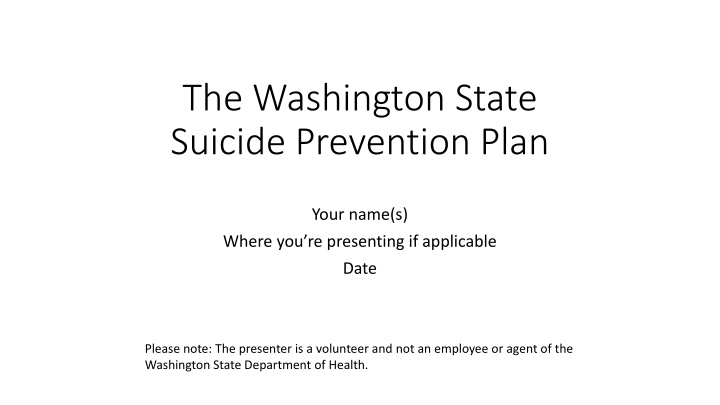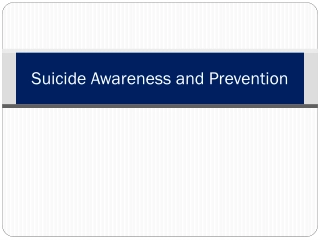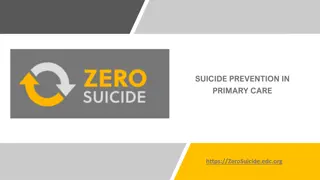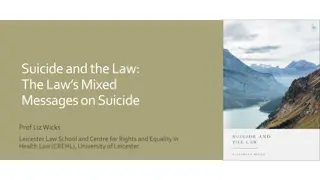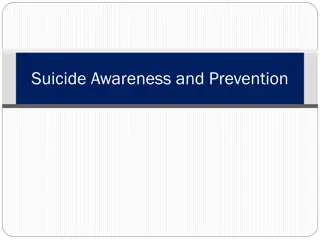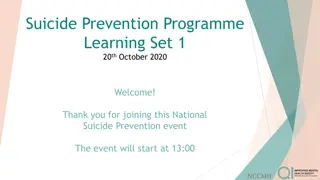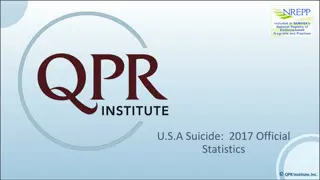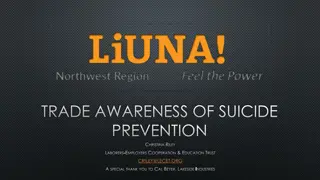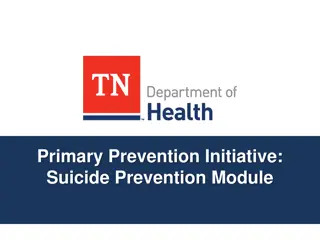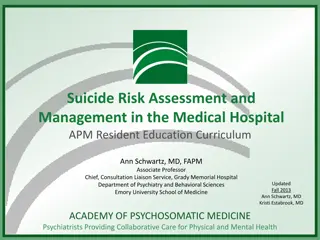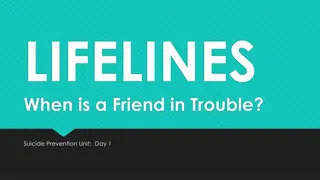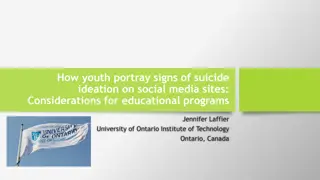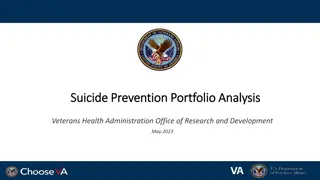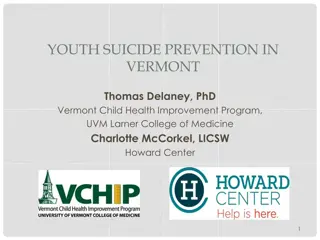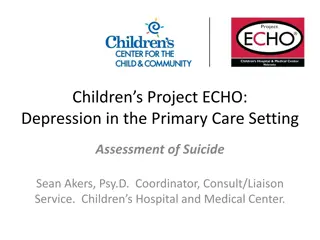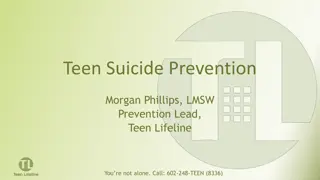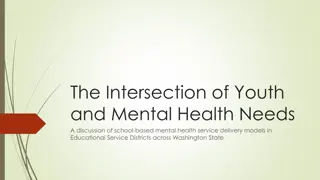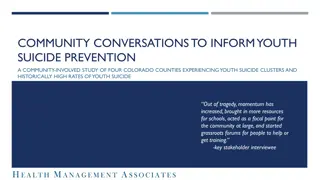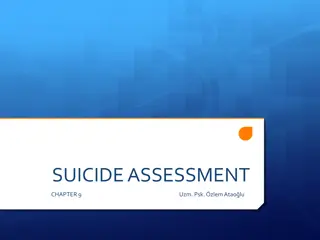Washington State Suicide Prevention Plan Overview
Washington State's suicide prevention plan addresses the high suicide rates and emphasizes the importance of individual, community, and governmental involvement to prevent suicide in the state. The plan includes strategic directions for promoting mental health, providing preventive and support services, conducting research, and evaluating efforts to combat this critical public health issue.
Download Presentation

Please find below an Image/Link to download the presentation.
The content on the website is provided AS IS for your information and personal use only. It may not be sold, licensed, or shared on other websites without obtaining consent from the author.If you encounter any issues during the download, it is possible that the publisher has removed the file from their server.
You are allowed to download the files provided on this website for personal or commercial use, subject to the condition that they are used lawfully. All files are the property of their respective owners.
The content on the website is provided AS IS for your information and personal use only. It may not be sold, licensed, or shared on other websites without obtaining consent from the author.
E N D
Presentation Transcript
The Washington State Suicide Prevention Plan Your name(s) Where you re presenting if applicable Date Please note: The presenter is a volunteer and not an employee or agent of the Washington State Department of Health.
Introduction Presenter intro Purpose of this presentation
Why does Washington need a state suicide prevention plan? We have a higher suicide rate than the US as a whole. Insert image(s) here 1,119 people died by suicide in Washington in 2014. Suicide is the eighth leading cause of death in Washington second for people ages 10 to 34. More than 4 percent of adults and one in five 10th-graders say they seriously considered suicide in the past year.
Suicide is a serious public health problem. Suicide rates are even higher in some groups in our state: Insert image(s) here Males 45 years old and older In rural areas American Indian/Alaska Natives and Whites Higher poverty and lower educational attainment areas Participation in the armed forces The financial and emotional costs of suicide are very high in our families and communities. Suicide is preventable, and everyone has a role to play in prevention.
Impact in our community In ** County The suicide rate from 2010 to 2014 was **, ** than the state rate. Insert image(s) here The rate of hospitalization for self- inflicted injury was **, ** than the state rate. ** people died by suicide from 2010 to 2014. .
What is the Washington State Suicide Prevention Plan? Developed by the Department of Health and many partners in response to House Bill 2315 Guidance on understanding and responding to suicide in Washington Recommendations for individuals, groups, systems and governments to be part of the solution
Whats in the plan? Understanding Suicide Background on suicide risk and protective factors and prevention strategies Suicide in Washington What this critical public health problem looks like in our state Goals and Recommendations Strategic Direction 1: Healthy and Empowered Individuals, Families and Communities Strategic Direction 2: Clinical and Community Preventive Services Strategic Direction 3: Treatment and Support Services Strategic Direction 4: Surveillance, Research and Evaluation Extra Information Resources, legislative history, contributors, action planning tool and sources
Healthy and Empowered Individuals, Families and Communities The public knows suicide is a public health problem and everyone can be part of the solution Journalists and social media posters talk about suicide and behavioral health safely and respectfully. Children get social and emotional health education at home and in daycare, school and community programs Connectedness is promoted as a protective factor against suicide
Clinical and Community Preventive Services Governments, systems and institutions adopt comprehensive suicide prevention programs Appropriate, useful trainings on suicide prevention are available to the public and to health professionals Access to the most lethal means is limited for people in crisis People know about the behavioral health care resources in their communities
Treatment and Support Services Access to mental health, substance abuse and crisis treatment is expanded Support for patients to stay connected and safe after emergency and inpatient crisis treatment improves People at risk can choose support people to participate in their treatment and follow up care Effective postvention (support after a suicide loss) is available for people who have lost someone to suicide
Suicide Surveillance, Research and Evaluation Strong systems are in place to gather data and use it to guide prevention Researchers and government agencies work together on suicide prevention research Suicide prevention programs and activities are evaluated and improved
What can we all do about suicide in **? Individual actions getting help, getting involved, supporting others Insert image(s) here Changing policies, knowledge, practices and services where we work and spend time Community work such as coalitions, events and public awareness campaigns Changing local government practices such as funding and program design Advocating for change in state and national policies Cultural change such as reducing stigma
Taking action As a **, what can we do together to prevent suicide? First, two things everyone can do RIGHT NOW Take this list of warning signs of suicide risk and put it somewhere you can easily find it if you re worried about someone. (page 12 of the suicide prevention plan) Save the National Suicide Prevention Lifeline number (800-273-8255) in your phone. If you notice warning signs, call this number. Second, let s talk about what our (institution, community, etc.) needs.
Discussion Get with a partner/get in a small group. Looking at the list of goals from the plan where do you think our ** needs to start to prevent suicide? Report back and discuss
Next steps How can we keep this conversation going?
Thank you! We ve all taken some basic steps that will help us prevent suicide. Everyone can be part of the solution and the suicide prevention plan will help. Thanks for participating in this conversation!
